RA Roundtable met this week at the Emmet O’Neal Library for
a discussion of literature in translation.
Our next meeting is on Wednesday, August 9 at 9am at the Hoover Library
and the topic up for discussion will be parenting/mentoring titles. Also, it will be time to set up meetings for
next year. I’ve already had a request
for a repeat of bookgroup picks so think about what you’d like to read and I’ll
add it to list of choices!
Don’t forget to mark your calendars for the 2017 JCPLA Staff
Development Day at Homewood! The keynote
speaker is William Ottens, the hero behind the popular Librarian Problems tumblr!

A Man Called Ove by Fredrik Backman
Meet Ove. He’s a curmudgeon—the kind of man who points at people he dislikes as if they were burglars caught outside his bedroom window. He has staunch principles, strict routines, and a short fuse. People call him “the bitter neighbor from hell.” But must Ove be bitter just because he doesn’t walk around with a smile plastered to his face all the time?
Behind the cranky exterior there is a story and a sadness. So when one November morning a chatty young couple with two chatty young daughters move in next door and accidentally flatten Ove’s mailbox, it is the lead-in to a comical and heartwarming tale of unkempt cats, unexpected friendship, and the ancient art of backing up a U-Haul. All of which will change one cranky old man and a local residents’ association to their very foundations.
Meet Ove. He’s a curmudgeon—the kind of man who points at people he dislikes as if they were burglars caught outside his bedroom window. He has staunch principles, strict routines, and a short fuse. People call him “the bitter neighbor from hell.” But must Ove be bitter just because he doesn’t walk around with a smile plastered to his face all the time?
Behind the cranky exterior there is a story and a sadness. So when one November morning a chatty young couple with two chatty young daughters move in next door and accidentally flatten Ove’s mailbox, it is the lead-in to a comical and heartwarming tale of unkempt cats, unexpected friendship, and the ancient art of backing up a U-Haul. All of which will change one cranky old man and a local residents’ association to their very foundations.
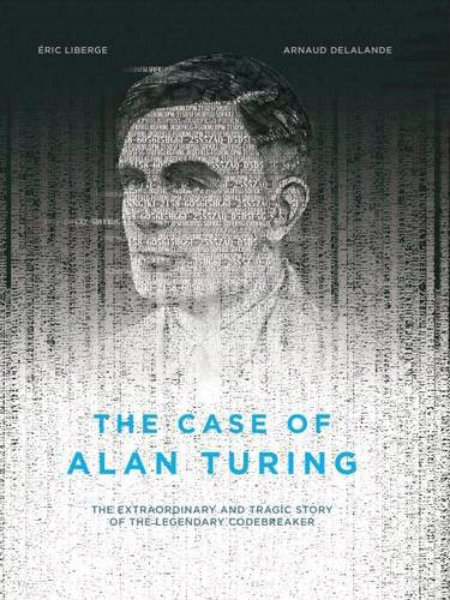
The Case of Alan Turing: The Extraordinary and Tragic Story of the Legendary Codebreaker by Eric Liberge
Alan Turing, subject of the Oscar-winning 2014 film The Imitation Game, was the brilliant mathematician solicited by the British government to help decipher messages sent by Germany's Enigma machines during World War II. The work of Turing and his colleagues at Hut 8 created what became known as the "bombe" which descrambled the German navy's messages and saved countless lives and millions in British goods and merchandise.
Alan Turing, subject of the Oscar-winning 2014 film The Imitation Game, was the brilliant mathematician solicited by the British government to help decipher messages sent by Germany's Enigma machines during World War II. The work of Turing and his colleagues at Hut 8 created what became known as the "bombe" which descrambled the German navy's messages and saved countless lives and millions in British goods and merchandise.
Despite his heroics, however, Turing led a secret life as a
homosexual. After a young man with whom he was involved stole money from him,
he went to the police, where he confessed his homosexuality; he was charged
with gross indecency, and only avoided prison after agreeing to undergo
chemical castration. Tragically, he committed suicide two years later.
Authors Liberge and Delalande used once-classified
information only available in 2012 to create a biography that is scientifically
rigorous yet understandable for the lay reader. It's also a meticulous
depiction of World War II, and an intimate portrayal of a gay man living in an
intolerant world.
Delving deeper into Turing's life than The Imitation
Game, this graphic novel is a fascinating portrait of this brilliant,
complicated, and troubled man.

The Department Q series of Jussi Adler-Olsen
Carl Mørck used to be one of Denmark’s best homicide detectives. Then a hail of bullets destroyed the lives of two fellow cops, and Carl—who didn’t draw his weapon—blames himself. So a promotion is the last thing he expects. But Department Q is a department of one, and Carl’s got only a stack of cold cases for company.
Carl Mørck used to be one of Denmark’s best homicide detectives. Then a hail of bullets destroyed the lives of two fellow cops, and Carl—who didn’t draw his weapon—blames himself. So a promotion is the last thing he expects. But Department Q is a department of one, and Carl’s got only a stack of cold cases for company.

The novels of Fredrik Backman
Fredrik Backman is a Swedish blogger and columnist. A Man Called Ove, his first novel, has sold more than 500,000 copies in its native country and has been published in more than twenty-five languages all over the world.
Fredrik Backman is a Swedish blogger and columnist. A Man Called Ove, his first novel, has sold more than 500,000 copies in its native country and has been published in more than twenty-five languages all over the world.

The novels of Muriel Barbery
Muriel Barbery is a French novelist and professor of philosophy. Barbery entered the École Normale Supérieure de Fontenay-Saint-Cloud in 1990 and obtained her agrégation in philosophy in 1993. She then taught philosophy at the Université de Bourgogne, in a lycée, and at the Saint-Lô IUFM.
Muriel Barbery is a French novelist and professor of philosophy. Barbery entered the École Normale Supérieure de Fontenay-Saint-Cloud in 1990 and obtained her agrégation in philosophy in 1993. She then taught philosophy at the Université de Bourgogne, in a lycée, and at the Saint-Lô IUFM.
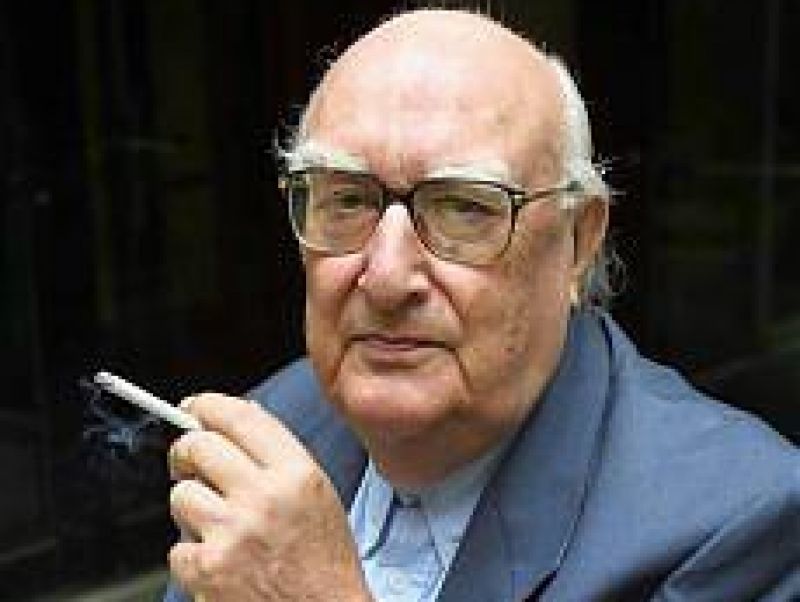
Andrea Camilleri’s Inspector Montalbano mysteries
ANDREA CAMILLERI is the author of many books, including his Montalbano series, which has been adapted for Italian television and translated into German, French, Spanish, Portuguese, Greek, Japanese, Dutch, Swedish, and finally, English. He was born at Porto Empedocle, near Agrigento. His style is very particular as he mixes Italian and local dialect without however making it unreadable for those who are not from that part of Italy. Camilleri has won numerous literary awards in Italy as well as in France.
ANDREA CAMILLERI is the author of many books, including his Montalbano series, which has been adapted for Italian television and translated into German, French, Spanish, Portuguese, Greek, Japanese, Dutch, Swedish, and finally, English. He was born at Porto Empedocle, near Agrigento. His style is very particular as he mixes Italian and local dialect without however making it unreadable for those who are not from that part of Italy. Camilleri has won numerous literary awards in Italy as well as in France.
A Nest of Vipers (Aug 2017)
The Pyramid of Mud (Jan 2018)

The Konrad Simonsen mysteries of Lotte and Soren Hammer
Detective Chief Inspector Konrad Simonsen, faces both life and murder investigations on the basis of his morals. This sometimes has serious consequences. He has a strong loyalty towards his employees, which ever so often clashes with his superior’s loyalties.
The Lake (2017)

Jo Nesbo’s Harry Hole mysteries
Harry Hole (pronounced "Harry HOO-LEH") is the main character in a series of crime novels written by Norwegian author Jo Nesbø. Hole is a brilliant and driven detective with unorthodox methods, a classic loose cannon in the police force.

Carlos Ruiz Zafon’s Cemetery of Forgotten Books series
Carlos Ruiz Zafón is the author of six novels, including the international phenomenon The Shadow of the Wind, and The Angel’s Game. His work has been published in more than forty different languages, and honored with numerous international awards. He divides his time between Barcelona, Spain, and Los Angeles, California.

Georges Simenon’s Inspector Maigret mysteries
Jules Amedée François Maigret, simply Jules Maigret or Maigret to most people, including his wife, is a fictional French police detective, actually a commissaire or commissioner of the Paris "Brigade Criminelle" (Direction Régionale de Police Judiciaire de Paris), created by writer Georges Simenon.
75 novels and 28 short stories about Maigret were published between 1931 and 1972, starting with Pietr-le-Letton (Pietr the Lett) and concluding with Maigret et Monsieur Charles. The Maigret stories were also adapted for television and radio.
There are WAY to many to list! https://www.fantasticfiction.com/s/georges-simenon/

Zama by Anonio Di Benedetto
First published in 1956, Zama is now universally recognized as one of the masterpieces of modern Argentine and Spanish-language literature.
Written in a style that is both precise and sumptuous, weirdly archaic and powerfully novel, Zama takes place in the last decade of the eighteenth century and describes the solitary, suspended existence of Don Diego de Zama, a highly placed servant of the Spanish crown who has been posted to Asunción, the capital of remote Paraguay. There, eaten up by pride, lust, petty grudges, and paranoid fantasies, he does as little as he possibly can while plotting his eventual transfer to Buenos Aires, where everything about his hopeless existence will, he is confident, be miraculously transformed and made good.
Don Diego’s slow, nightmarish slide into the abyss is not just a tale of one man’s perdition but an exploration of existential, and very American, loneliness. Zama, with its stark dreamlike prose and spare imagery, is at once dense and unforeseen, terse and fateful, marked throughout by a haunting movement between sentences, paragraphs, and sections, so that every word seems to emerge from an ocean of things left unsaid. The philosophical depths of this great book spring directly from its dazzling prose.

The Four Corners of Palermo by Guiseppe Di Piazza
Palermo in the 1980s is a perfect place for a young crime reporter to get his start. The Sicilian Mafia is at work, threatening, wounding, and killing anyone who dares to defy their orders. Our protagonist is himself no angel, hardly compassionate, a bit macho and egocentric, but candid in his recounting of what has unfolded in front of his eyes both on the job and in his private life.
Di Piazza, who is also a Sicilian journalist, tells his stories as if he were reporting actual events. His description of the tense bravado of a youth growing up in the midst of Mafia terror is strikingly acute.

Sudden Death by Alvaro Enrigue
The poet and the artist battle it out in Rome before a crowd that includes Galileo, a Mary Magdalene, and a generation of popes who would throw the world into flames. In England, Thomas Cromwell and Henry VIII execute Anne Boleyn, and her crafty executioner transforms her legendary locks into those most-sought-after tennis balls. Across the ocean in Mexico, the last Aztec emperors play their own games, as the conquistador Hernán Cortés and his Mayan translator and lover, La Malinche, scheme and conquer, fight and f**k, not knowing that their domestic comedy will change the course of history. In a remote Mexican colony a bishop reads Thomas More’s Utopia and thinks that it’s a manual instead of a parody. And in today’s New York City, a man searches for answers to impossible questions, for a book that is both an archive and an oracle.
Álvaro Enrigue’s mind-bending story features assassinations and executions, hallucinogenic mushrooms, bawdy criminals, carnal liaisons and papal schemes, artistic and religious revolutions, love and war. A blazingly original voice and a postmodern visionary, Enrigue tells the grand adventure of the dawn of the modern era, breaking down traditions and upending expectations, in this bold, powerful gut-punch of a novel.

Man Tiger by Eka Kurniawan
A wry, affecting tale set in a small town on the Indonesian coast, Man Tiger tells the story of two interlinked and tormented families and of Margio, a young man ordinary in all particulars except that he conceals within himself a supernatural female white tiger. The inequities and betrayals of family life coalesce around and torment this magical being. An explosive act of violence follows, and its mysterious cause is unraveled as events progress toward a heartbreaking revelation.
Lyrical and bawdy, experimental and political, this extraordinary novel announces the arrival of a powerful new voice on the global literary stage.

Oblivion by Sergei Lebedev
In one of the first twenty-first century Russian novels to probe the legacy of the Soviet prison camp system, a young man travels to the vast wastelands of the Far North to uncover the truth about a shadowy neighbor who saved his life, and whom he knows only as Grandfather II. What he finds, among the forgotten mines and decrepit barracks of former gulags, is a world relegated to oblivion, where it is easier to ignore both the victims and the executioners than to come to terms with a terrible past. This disturbing tale evokes the great and ruined beauty of a land where man and machine worked in tandem with nature to destroy millions of lives during the Soviet century. Emerging from today's Russia, where the ills of the past are being forcefully erased from public memory, this masterful novel represents an epic literary attempt to rescue history from the brink of oblivion.

Ladivine by Marie NDiaye
On the first Tuesday of every month, Clarisse Rivière leaves her husband and young daughter and secretly takes the train to Bordeaux to visit her mother, Ladivine. Just as Clarisse’s husband and daughter know nothing of Ladivine, Clarisse herself has hidden nearly every aspect of her adult life from this woman, whom she dreads and despises but also pities. Long ago abandoned by Clarisse’s father, Ladivine works as a housecleaner and has no one but her daughter, whom she knows as Malinka.
After more than twenty-five years of this deception, the idyllic middle-class existence Clarisse has built from scratch can no longer survive inside the walls she’s put up to protect it. Her untold anguish leaves her cold and guarded, her loved ones forever trapped outside, looking in. When her husband, Richard, finally leaves her, Clarisse finds comfort in the embrace of a volatile local man, Freddy Moliger. With Freddy, she finally feels reconciled to, or at least at ease with, her true self. But this peace comes at a terrible price. Clarisse will be brutally murdered, and it will be left to her now-grown daughter, who also bears the name Ladivine without knowing why, to work out who her mother was and what happened to her. A mesmerizing and heart-stopping psychological tale of a trauma that ensnares three generations of women, Ladivine proves Marie NDiaye to be one of Europe’s great storytellers.

Margarito and the Snowman by R.E. Young
RE Young ‘s latest features a nation buried in snow and ice in an obligatory 365 days a year Christmas celebration, a tribe of Mayan warriors in comedy troupe disguise, an existentially challenged hero known as the Snowman on a quest that takes him south of the border down ol’ Mexico way, and a B-grade movie director named Boone Weller with his own agenda. Is it a book? A movie? Told in a shoot from the hip Texas style, Margarito and the Snowman is loose, rangy, battered with an attitude and bound to offend everybody.

The Nina Borg myseries by Lene Kaaberbol and Agnete Friis
Danish Red Cross nurse Nina Borg has dedicated her life to helping those underserved by society—but her do-gooder tendencies often lead her into situations beyond the law’s protection.

The Readers of Broken Wheel Recommend by Katarina Bivald
Broken Wheel, Iowa, has never seen anyone like Sara, who traveled all the way from Sweden just to meet her book-loving pen pal, Amy. When she arrives, however, she finds Amy's funeral guests just leaving. The residents of Broken Wheel are happy to look after their bewildered visitor―there's not much else to do in a dying small town that's almost beyond repair.
You certainly wouldn't open a bookstore. And definitely not
with the tourist in charge. You'd need a vacant storefront (Main Street is full
of them), books (Amy's house is full of them), and...customers.
The bookstore might be a little quirky. Then again, so is
Sara. But Broken Wheel's own story might be more eccentric and surprising than
she thought.
The Bible has been translated into many
languages from the biblical languages of Hebrew, Aramaic and Greek.
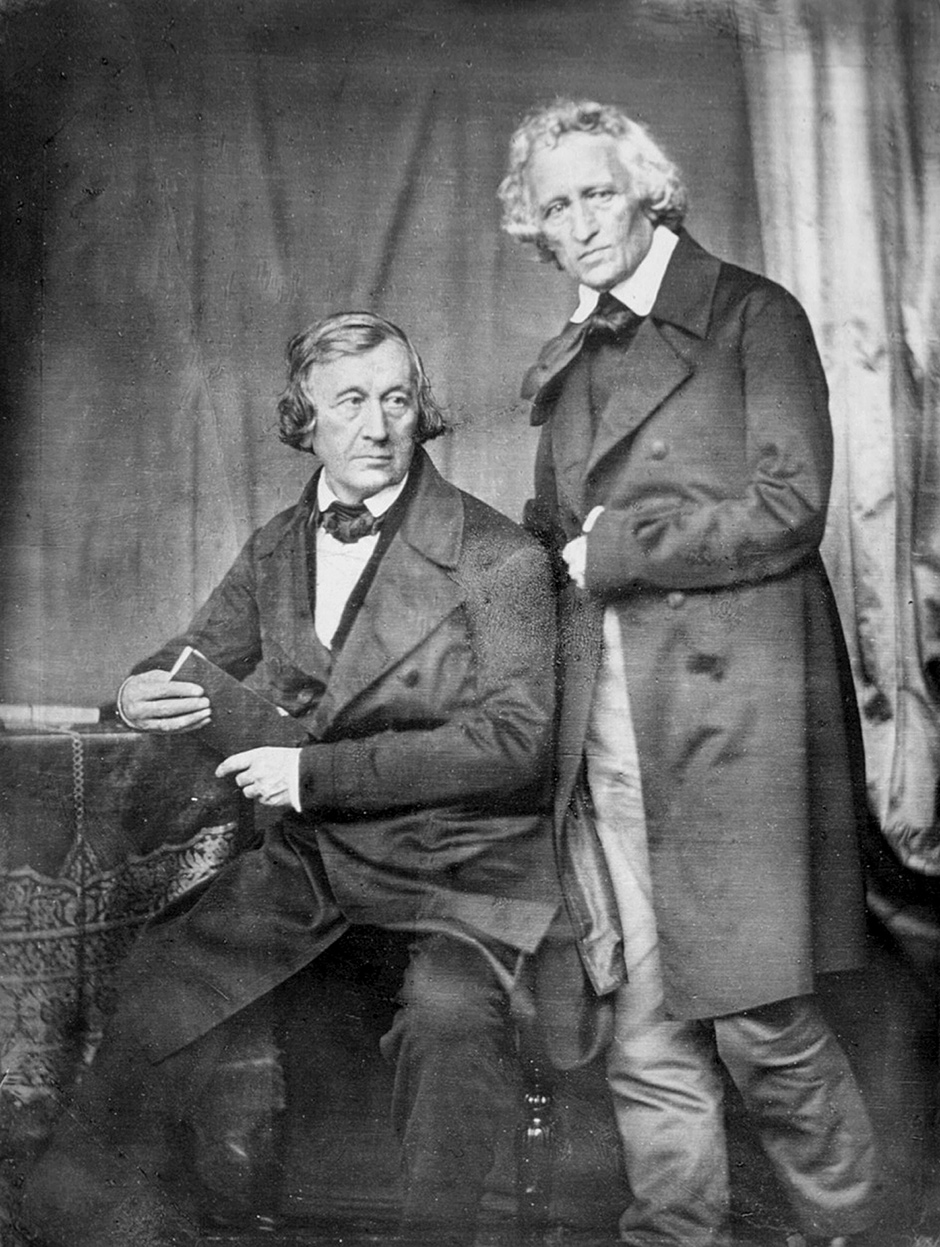
Grimm’s Fairy Tales
Two hundred years ago, two young German librarians by the names of Jacob and Wilhelm Grimm published a collection of tales that would become one of the most influential works of folklore in Germany, Europe, and eventually the world.
Between 1812 and 1857, seven editions of their
tales appeared, each one different from the last, until
the final, best-known version barely resembled the first.

Aesop’s Fables
Some may say that Aesop is infamous for the life he led over 2000 years ago and mostly for the hundreds of fables that have been attributed to his name since. Aesop’s fables have reached countless generations since he is reported to have been alive, and they continue to be a part of the lives of many. Not every fable, however, that has been linked to Aesop is his own original material. In actuality, there are many fables attributed to Aesop that, for a variety of reasons, couldn’t possibly be his own. In many ways the unclear authorship of the fables is at the fault of the storytelling tradition, many details are naturally lost and/or altered. However the storytelling tradition is also responsible for the survival of the Aesop Fables—if story telling didn’t exist, neither Aesop nor his fables would have survived.

The Alchemist by Paolo Coehlo
Combining magic, mysticism, wisdom and wonder into an inspiring tale of self-discovery, The Alchemist has become a modern classic, selling millions of copies around the world and transforming the lives of countless readers across generations.
Paulo Coelho's masterpiece tells the mystical story of
Santiago, an Andalusian shepherd boy who yearns to travel in search of a
worldly treasure. His quest will lead him to riches far different—and far more
satisfying—than he ever imagined. Santiago's journey teaches us about the
essential wisdom of listening to our hearts, of recognizing opportunity and
learning to read the omens strewn along life's path, and, most importantly, to
follow our dreams.
In a Tokyo suburb a young man named Toru Okada searches for
his wife's missing cat. Soon he finds himself looking for his wife
as well in a netherworld that lies beneath the placid surface of
Tokyo. As these searches intersect, Okada encounters a bizarre group
of allies and antagonists: a psychic prostitute; a malevolent yet mediagenic
politician; a cheerfully morbid sixteen-year-old-girl; and an aging war veteran
who has been permanently changed by the hideous things he witnessed during
Japan's forgotten campaign in Manchuria.

The Strange Library by Haruki Murakami
Opening the flaps on this unique little book, readers will find themselves immersed in the strange world of best-selling Haruki Murakami's wild imagination. The story of a lonely boy, a mysterious girl, and a tormented sheep man plotting their escape from a nightmarish library, the book is like nothing else Murakami has written. Designed by Chip Kidd and fully illustrated, in full color, throughout, this small format, 96 page volume is a treat for book lovers of all ages.
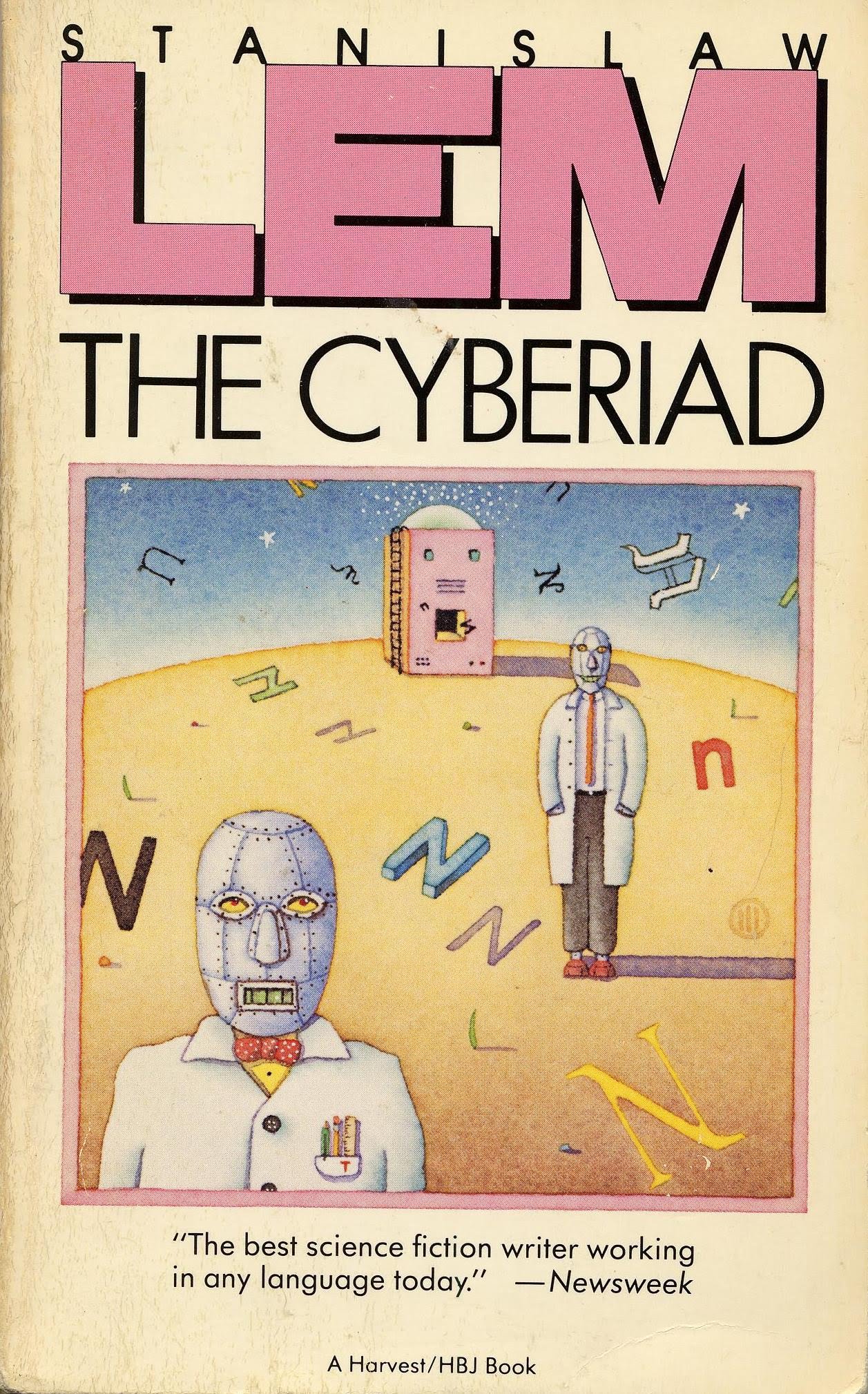
The Cyberiad by Stanislaw Lem
I first discovered this book in high school (through a
wonderful teacher whom I cannot thank enough) and it remains one of my
favorites. The Cyberiad chronicles the adventures of two “constructors”
(inventors) named Trurl and Klapaucius. The best term for their relationship
would be frenemies because they are constantly competing to invent more and
more wonderful devices and their exchanges are frequently vitriolic, but can
also be tinged with affection and mutual respect—even if they happen to be
yelling at each other. They also happen to be robots. When they are not trying to outdo each other
in inventive genius, they are often hired for tasks requiring their constructing
and problem-solving skills, such as “How Trurl Built a Femfatalatron to Save
Prince Pantagroon from the Pangs of Love, and How Later He Resorted to a
Cannonade of Babies.” How could I not want to find out what that was all about?
But my favorite of the stories is “Trurl’s Electronic Bard,” in which Trurl
creates a machine that can write poetry on demand, on any subject, in any form.
When challenged to write a tragic six-line poem about a haircut, in which every
word begins with the letter “s,” the machine obliges with this:
Seduced, shaggy Samson snored.
She scissored short. Sorely shorn,
Soon shackled slave, Samson sighed,
Silently scheming,
Sightlessly seeking
Some savage, spectacular suicide.
If the text can jump through these kinds of hoops in
English, what must it have been like in the original Polish? Kudos to Kandel
for his translation on this one. He keeps the prose lively and engaging, and I
can hardly imagine the stories any other way, especially since I can’t read
Polish. According to Kandel himself, “The
original Lem is so much better, worlds better, than Lem in Kandel’s English.
This is our punishment for trying to build a tower that reaches heaven.” But I
am more than willing to take his word for that, since his word is literally
what I have and I couldn’t have read Lem’s work without it.
Interview with Michael Kandel
Initially rejected by Verne’s editor as being a much too
grim view of the future, Paris in the Twentieth Century languished forgotten
until its discovery and publication in 1996. The protagonist, Michel Dufrenoy,
has the misfortune to have artistic and poetic inclinations in this future
society which values nothing more than technological advances. We can see which
way the wind is blowing for him early in the novel, when he is practically
laughed off the stage during Prize Day at the Academic Credit Union because he
has earned First Prize for Latin Verse. As he describes himself:
“Here I am abandoned on the high seas; requiring the talents
of a fish, all I have are the instincts of a bird; I want to live in space, in
the ideal regions no longer visited—the land of dreams from which one never
returns!”
Be careful what you wish for, indeed. Dufrenoy is
pathetically ill-suited to his society and is eventually ground down very fine
by its demands; however, part of the fascination of this novel for any fan of
Jules Verne is seeing what he predicts and how true to life his predictions
would be. Here as in other novels he is uncannily accurate on many points:
widespread electric lighting, automobiles (“gas cabs”), high-speed trains, fax
machine transmissions, and execution by electricity. Seeing Verne work his
prescient magic is reason enough to visit Paris in the Twentieth Century. The
novel is available for download in both English and French:
And just for fun:

The Dinner by Herman Koch
It's a summer's evening in Amsterdam, and two couples meet at a fashionable restaurant for dinner. Between mouthfuls of food and over the scrapings of cutlery, the conversation remains a gentle hum of polite discourse. But behind the empty words, terrible things need to be said, and with every forced smile and every new course, the knives are being sharpened.
Each couple has a fifteen-year-old son. The two boys are united by their accountability for a single horrific act; an act that has triggered a police investigation and shattered the comfortable, insulated worlds of their families. As the dinner reaches its culinary climax, the conversation finally touches on their children. As civility and friendship disintegrate, each couple show just how far they are prepared to go to protect those they love.
Skewering everything from parenting values to pretentious menus to political convictions, this novel reveals the dark side of genteel society and asks what each of us would do in the face of unimaginable tragedy.

The Vanishing by Tim Krabbe
When Saskia Ehlvest, a young Dutch girl, disappears from a rest stop along a highway in rural France, her lover, Rex Hofmann, cannot accept her disappearance and embarks on an obsessive search for her that spans years.

The Reader by Bernhard Schlink
Hailed for its coiled eroticism and the moral claims it makes upon the reader, this mesmerizing novel is a story of love and secrets, horror and compassion, unfolding against the haunted landscape of postwar Germany.
When he falls ill on his way home from school, fifteen-year-old Michael Berg is rescued by Hanna, a woman twice his age. In time she becomes his lover—then she inexplicably disappears. When Michael next sees her, he is a young law student, and she is on trial for a hideous crime. As he watches her refuse to defend her innocence, Michael gradually realizes that Hanna may be guarding a secret she considers more shameful than murder.

The Dirty Dust by Mairtin O'Cadhain
Máirtín Ó Cadhain’s irresistible and infamous novel The Dirty Dust is consistently ranked as the most important prose work in modern Irish, yet no translation for English-language readers has ever before been published. Alan Titley’s vigorous new translation, full of the brio and guts of Ó Cadhain’s original, at last brings the pleasures of this great satiric novel to the far wider audience it deserves.
In The Dirty Dust all characters lie dead in their graves. This, however, does not impair their banter or their appetite for news of aboveground happenings from the recently arrived. Told entirely in dialogue, Ó Cadhain’s daring novel listens in on the gossip, rumors, backbiting, complaining, and obsessing of the local community. In the afterlife, it seems, the same old life goes on beneath the sod. Only nothing can be done about it—apart from talk. In this merciless yet comical portrayal of a closely bound community, Ó Cadhain remains keenly attuned to the absurdity of human behavior, the lilt of Irish gab, and the nasty, deceptive magic of human connection.

Graveyard Clay by Mairtin O'Cadhain
In critical opinion and popular polls, Máirtín Ó Cadhain’s Graveyard Clay is invariably ranked the most important prose work in modern Irish. This bold new translation of his radically original Cré na Cille is the shared project of two fluent speakers of the Irish of Ó Cadhain’s native region, Liam Mac Con Iomaire and Tim Robinson. They have achieved a lofty goal: to convey Ó Cadhain’s meaning accurately and to meet his towering literary standards.
Graveyard Clay is a novel of black humor, reminiscent of the work of Synge and Beckett. The story unfolds entirely in dialogue as the newly dead arrive in the graveyard, bringing news of recent local happenings to those already confined in their coffins. Avalanches of gossip, backbiting, flirting, feuds, and scandal-mongering ensue, while the absurdity of human nature becomes ever clearer. This edition of Ó Cadhain’s masterpiece is enriched with footnotes, bibliography, publication and reception history, and other materials that invite further study and deeper enjoyment of his most engaging and challenging work.
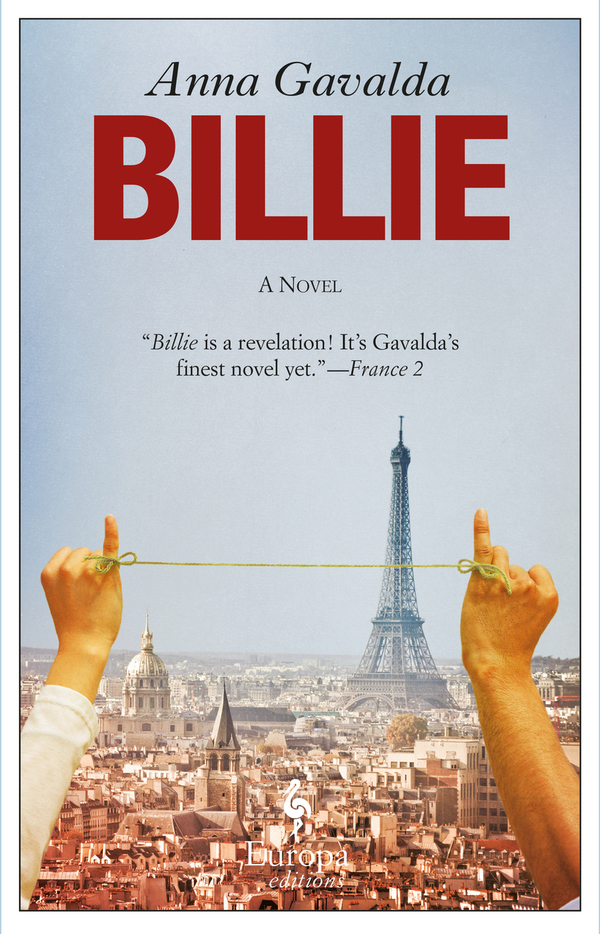
Billie by Anna Gavalda
A number 1 bestseller in France and translated into over twenty-five languages, Billie is one of the most beloved French novels to be published in recent years. A brilliant evocation of contemporary Paris and a moving tale of friendship, Anna Gavalda’s new novel tells the story of two young people, Billie and Franck, who, as the story opens, are trapped in a gorge in the Cévennes Mountains. Billie begins to tell stories from their lives in order to calm herself and Franck as darkness encroaches. In alternating episodes, the novel moves between recollections of the two characters’ childhoods and their dire predicament.
Franck’s life has been impacted by a childhood spent with a perennially unemployed father who toyed with Christian extremism and a mother aestheticized by antidepressants. A bright kid, Franck’s future was menaced at every turn by the bigotry surrounding him. As for Billie, her abiding wish as an adult is to avoid ever having to come into contact with her family again. To escape from her abusive and alcohol-addled family, she was willing to do anything and everything. The wounds have not entirely healed.
At the heart of Gavalda’s moving story lies a generosity of spirit that will take readers’ breath away, and an unshakable belief in the power of art to lift the most fragile among us to new vistas from which they can see futures full of hope, love, and dignity. Billie is a beautifully crafted novel for readers of all ages and from all walks of life that conveys a positive message about overcoming life’s trials and tribulations.


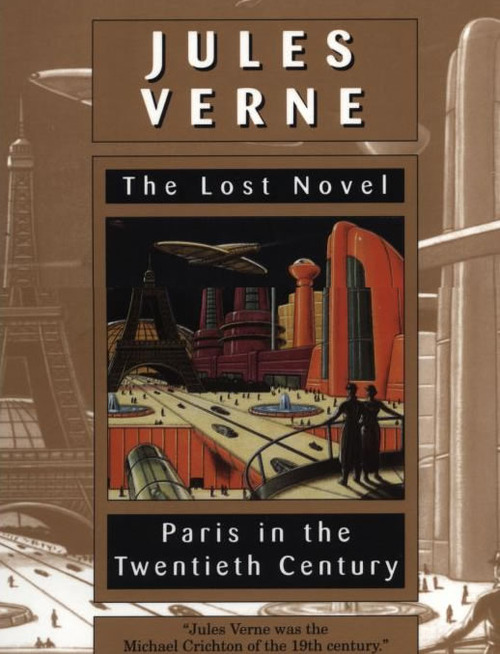
No comments:
Post a Comment